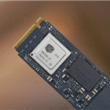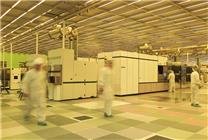TSMC’s $165 Billion U.S. Investment: Challenges and Prospects
Summary:
- TSMC’s monumental $165 billion investment in the U.S. aims to establish advanced chip manufacturing capabilities.
- Despite increased production, TSMC’s U.S. profits dropped drastically, highlighting significant financial pressures.
- The ability to manage costs and operational efficiency will be crucial for TSMC’s return on investment.
On November 17, it was reported that Taiwan Semiconductor Manufacturing Company (TSMC) has been compelled to ramp up its investments in the United States due to growing pressures from the U.S. government. The semiconductor giant is poised to invest an astonishing $165 billion to develop multiple advanced chip manufacturing facilities across the country, marking one of the largest investments in the U.S. semiconductor sector in decades.
Financial Landscape and Profitability Challenges
Despite the ambitious scale of this investment, TSMC faces significant challenges in recovering the vast expenditures involved. Examining its financial reports reveals that while the initial phase of the new facility has begun mass production, making an impressive profit of approximately NT$4.23 billion (around $965 million), more recent figures tell a different story. In the third quarter, profits dwindled to a mere NT$41 million—a staggering decline of 99% month-on-month.
The decrease in profitability can be attributed to several factors. Although output has increased due to initial production phases, the company is still grappling with high depreciation costs and ongoing construction expenses related to its second factory in Arizona, which is scheduled to commence operations in Q2 of the upcoming year.
A Look at Recent Performance
Over the last year, TSMC’s American division has seen profits fluctuate dramatically, including losses of NT$4.98 billion, a profit of NT$496 million, and then further profits only to plunge again. Overall, the data from Q4 last year to the current period indicates a net loss, underscoring the operational hurdles that must be navigated in order to achieve profitability.
Future Innovations and Investments
Currently, TSMC is advancing its manufacturing capabilities with the mass production of 4nm and 5nm processes. Future initiatives will see the transition to even more cutting-edge processes, such as 3nm and 2nm technologies, alongside the acquisition of a High NA EUV lithography machine valued at $400 million. However, the financial burden of these sophisticated technologies cannot be overlooked, as they introduce substantial costs, adding to the ongoing depreciation and construction pressures that TSMC must manage.
Strategic Management and Outlook
The ability of TSMC to effectively control and optimize its U.S. operations—balancing manpower, materials, and production efficiencies—will be pivotal in determining whether this colossal investment can be recouped. Moving forward, TSMC’s strategy will require not only technological advancements but also meticulous financial oversight to turn its vision into a sustainable reality.
Conclusion
TSMC’s monumental investment in the U.S. semiconductor industry brings with it a wealth of opportunity intertwined with significant challenges. As the company navigates the complexities of scaling production and managing operational costs, its capacity for strategic decision-making will be critical in defining its success. All eyes will be on TSMC as it works to transform its ambitious plans into valuable outcomes in the evolving landscape of global semiconductor manufacturing.
This article delves into the multifaceted implications of TSMC’s investment strategy, highlighting the intricate balance of opportunity and risk in the rapidly evolving semiconductor market.







